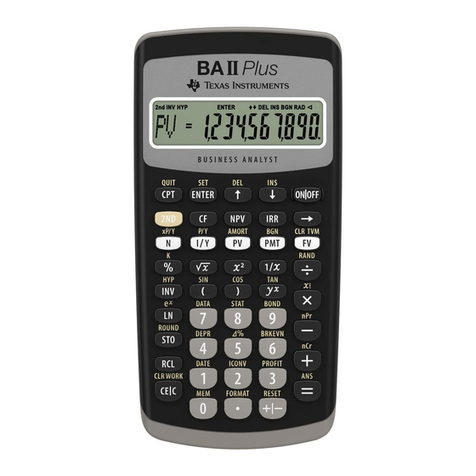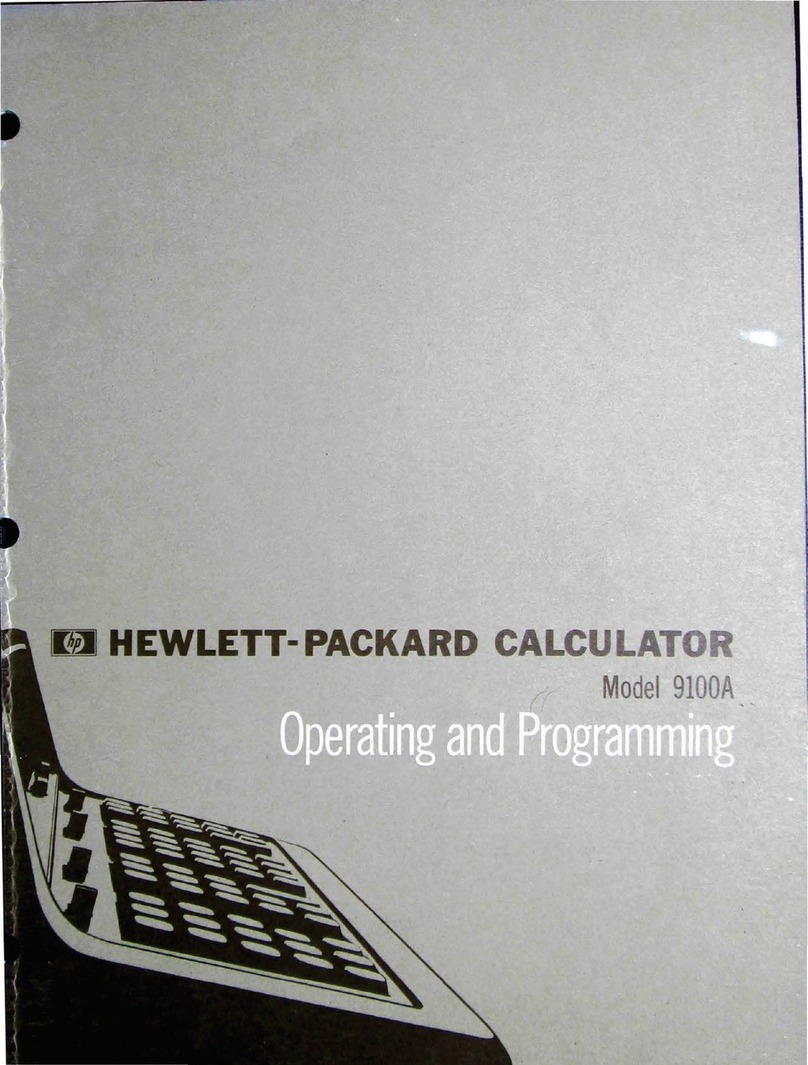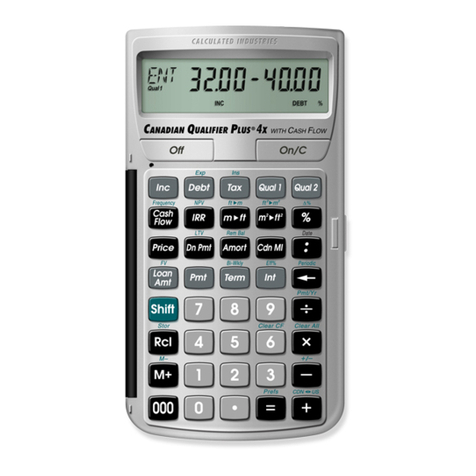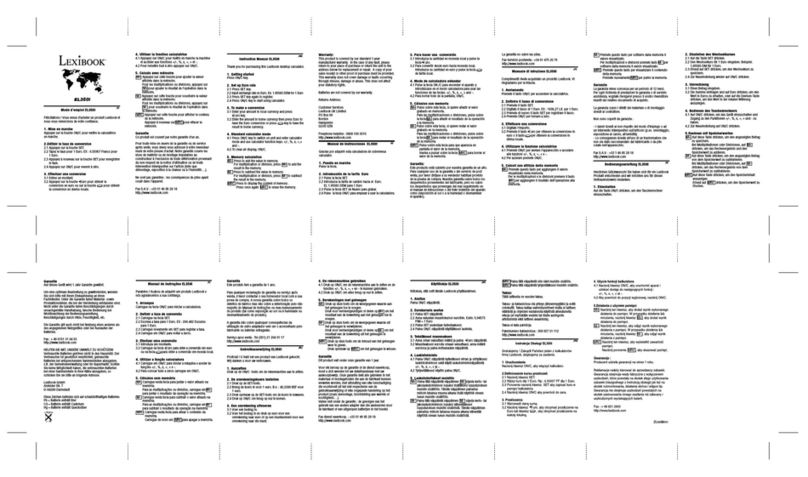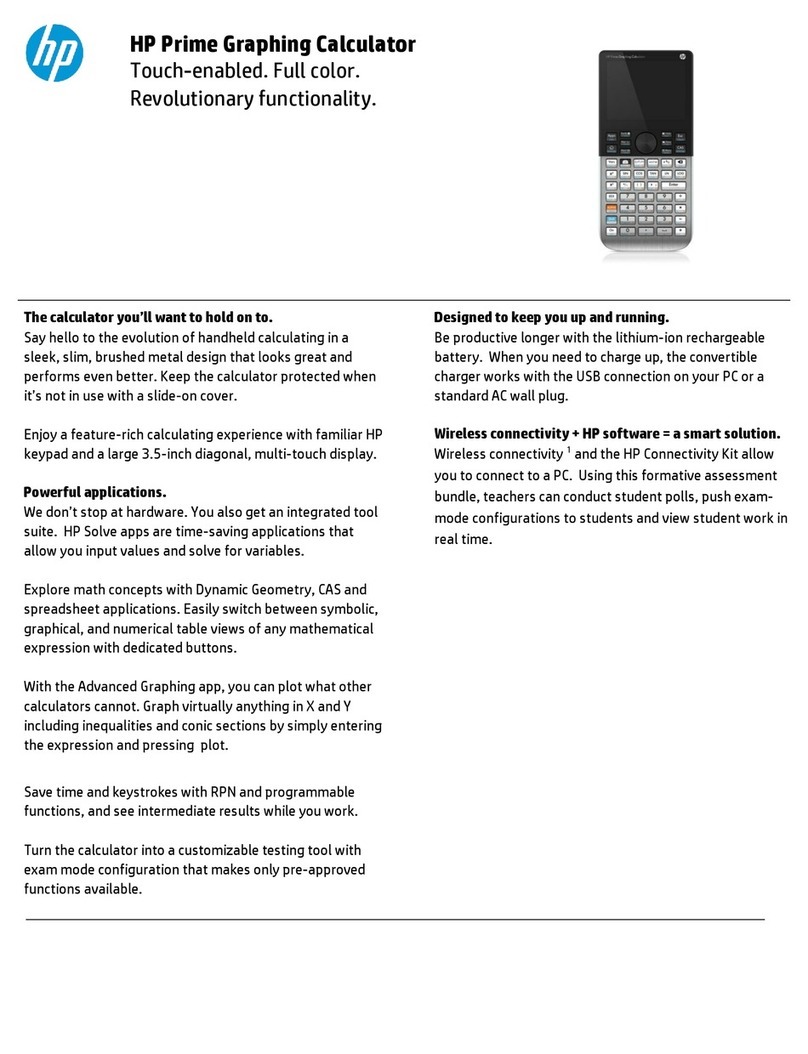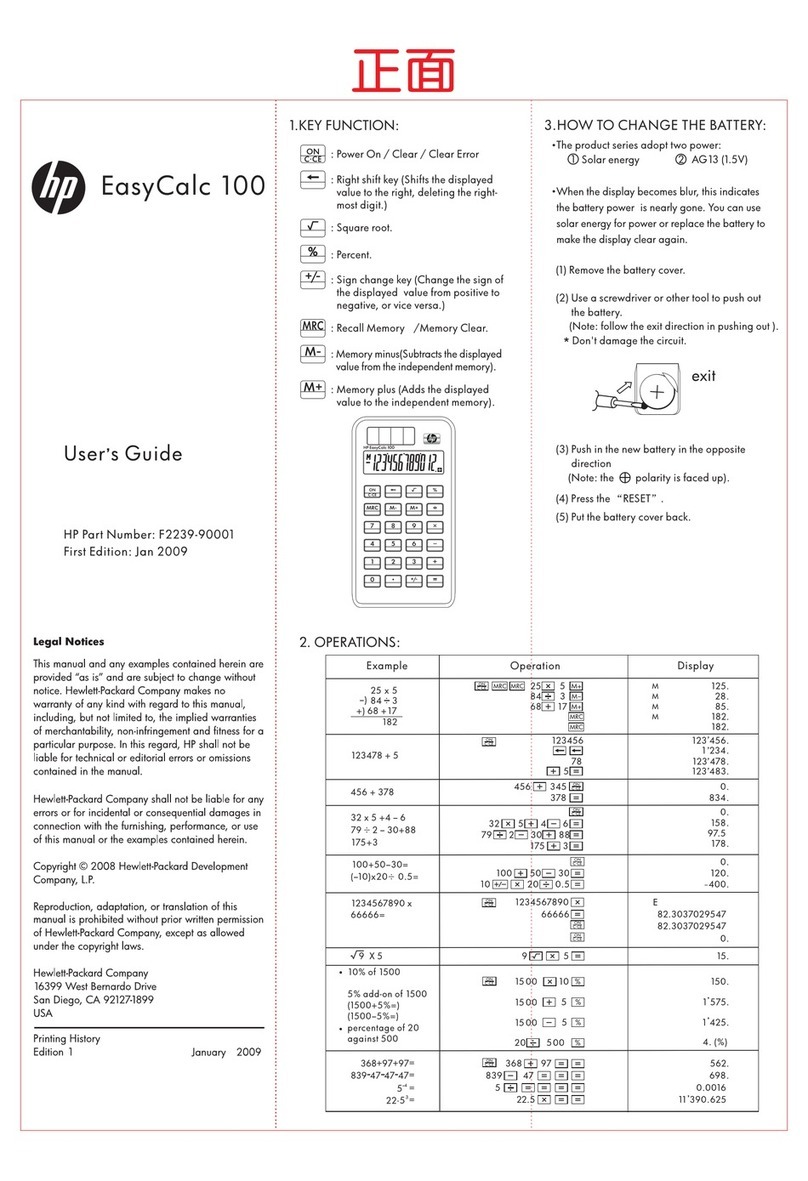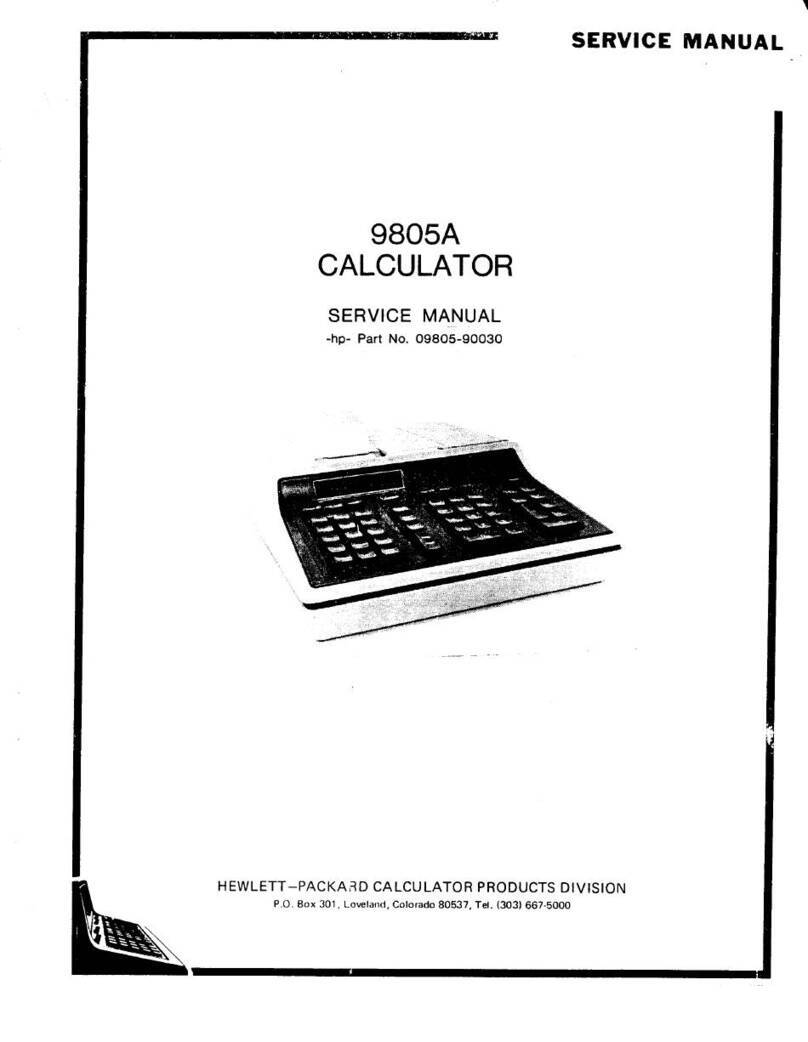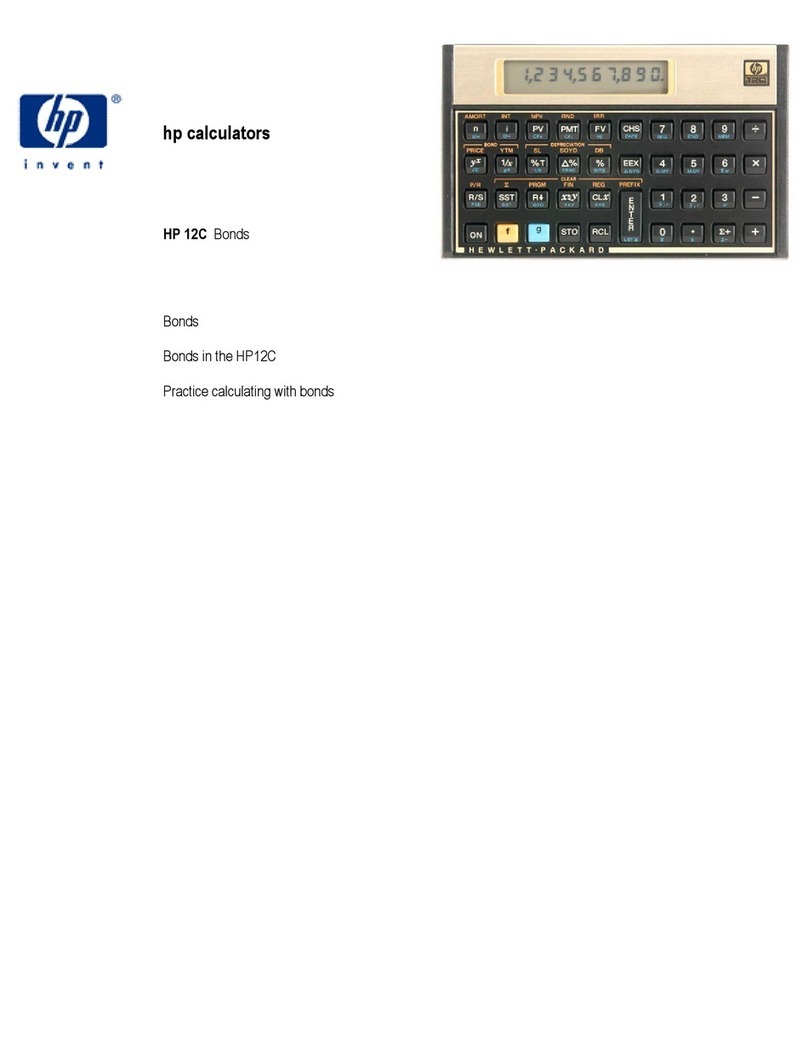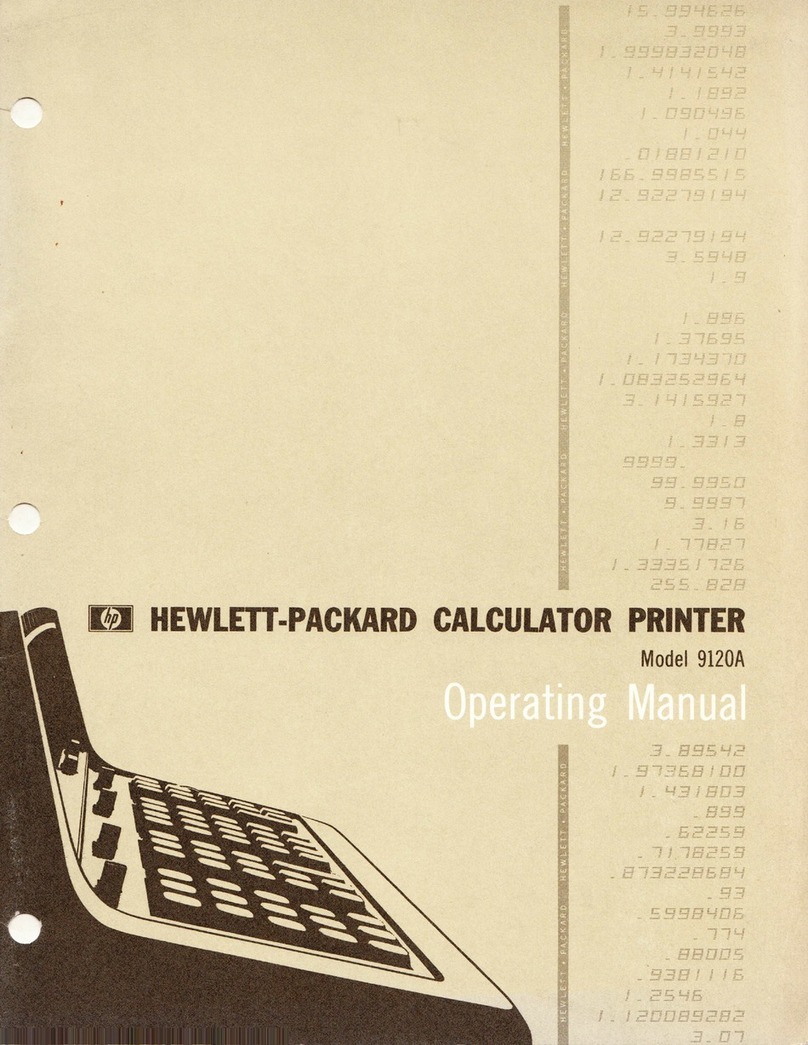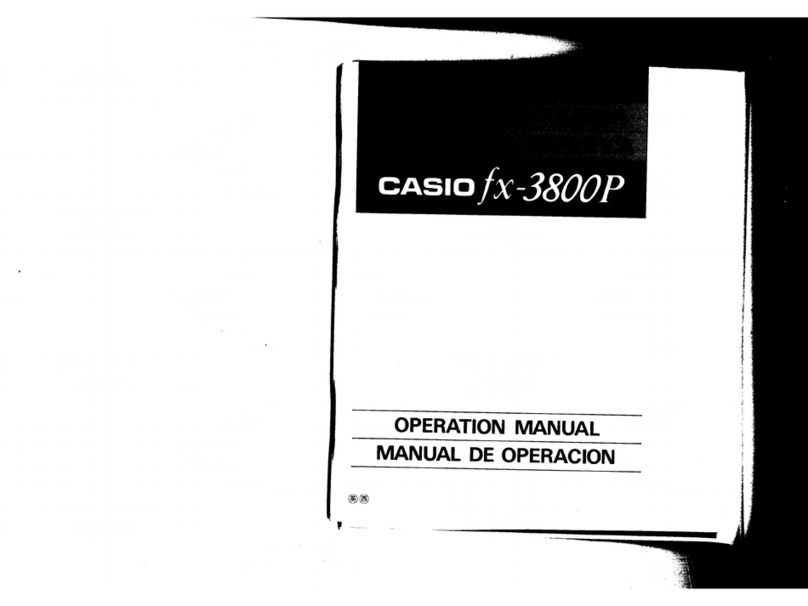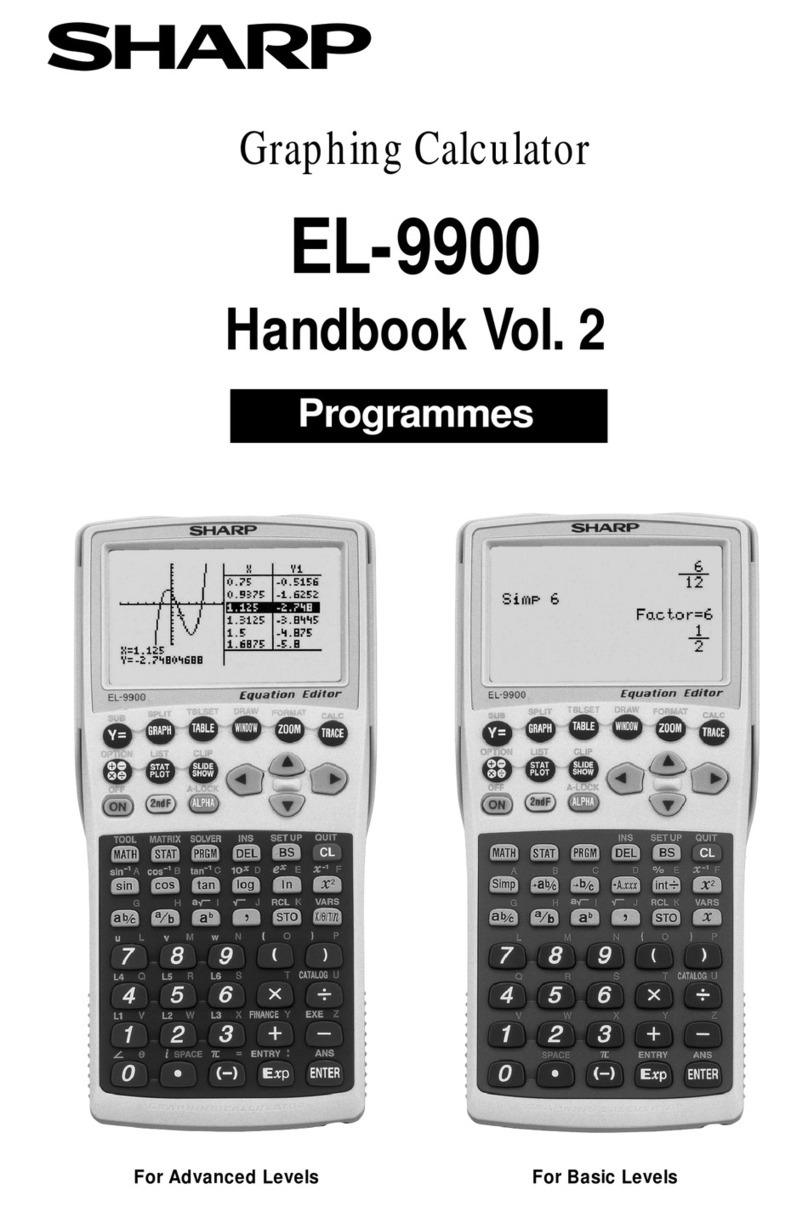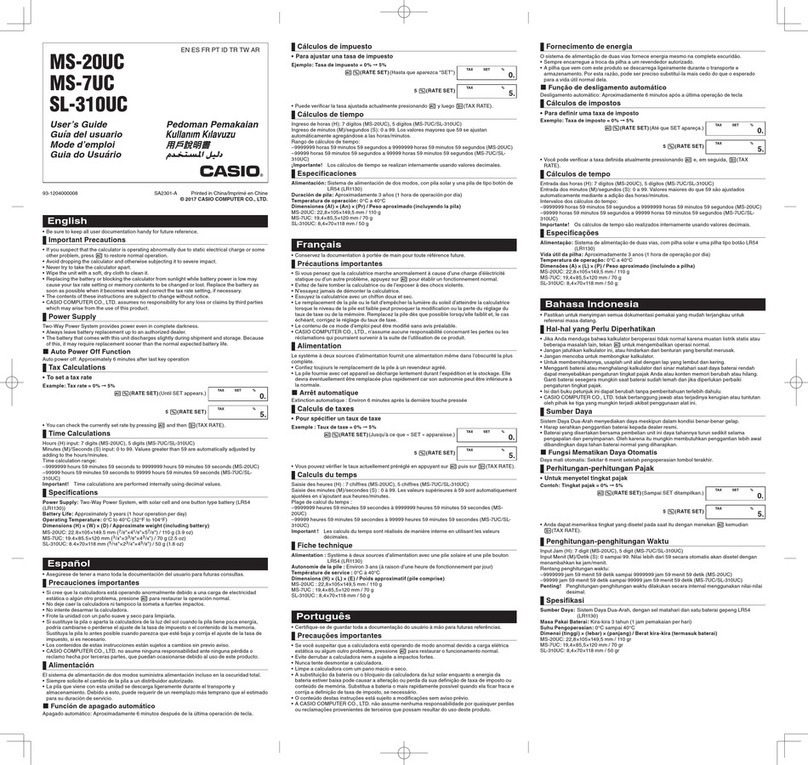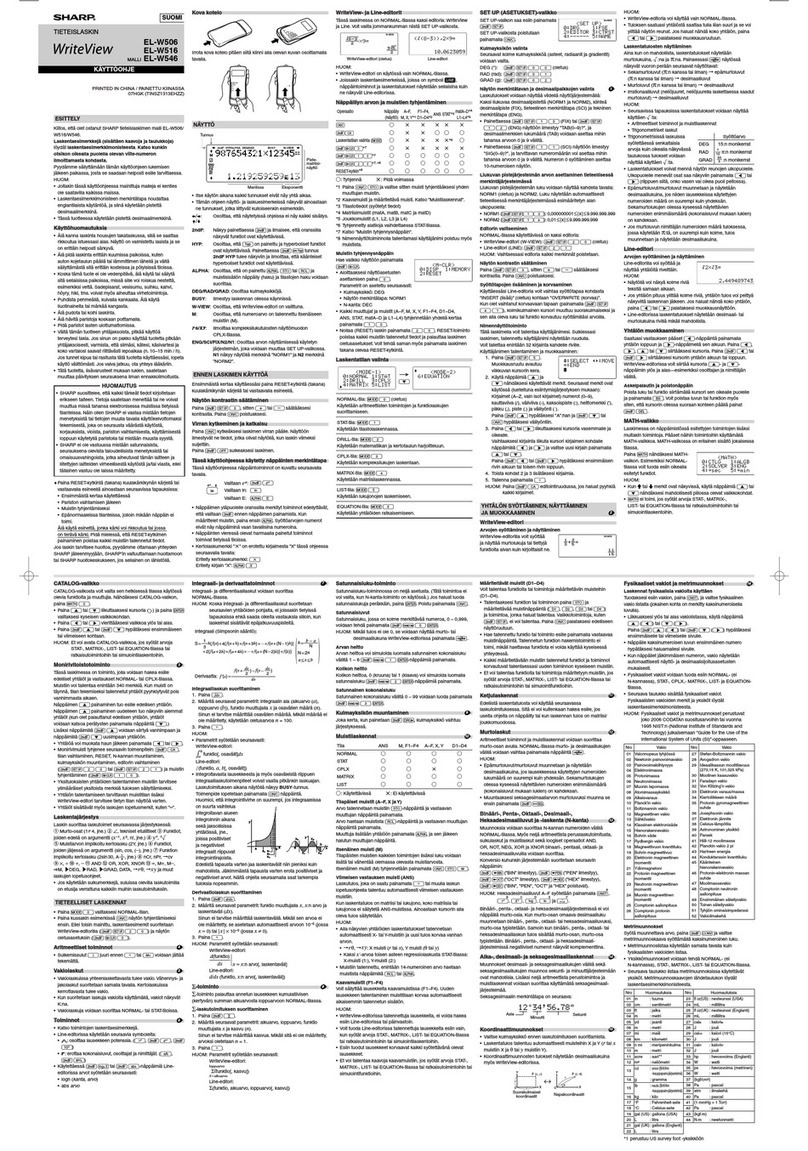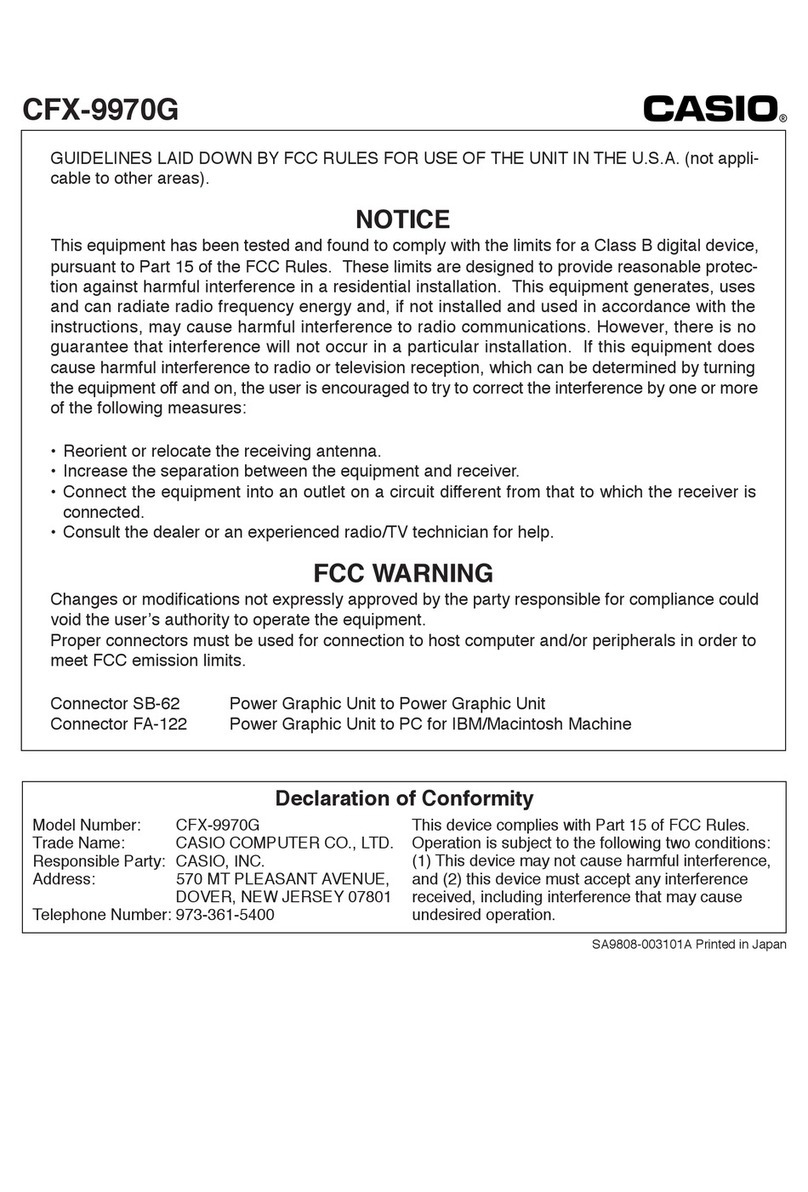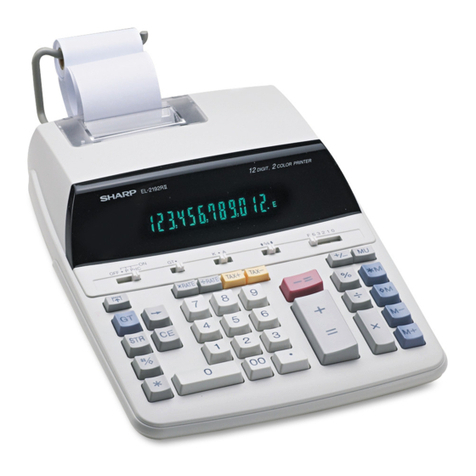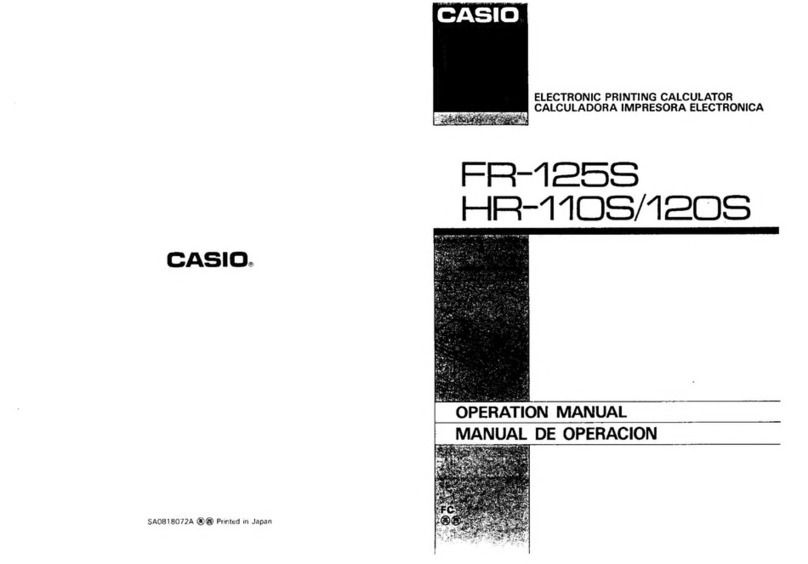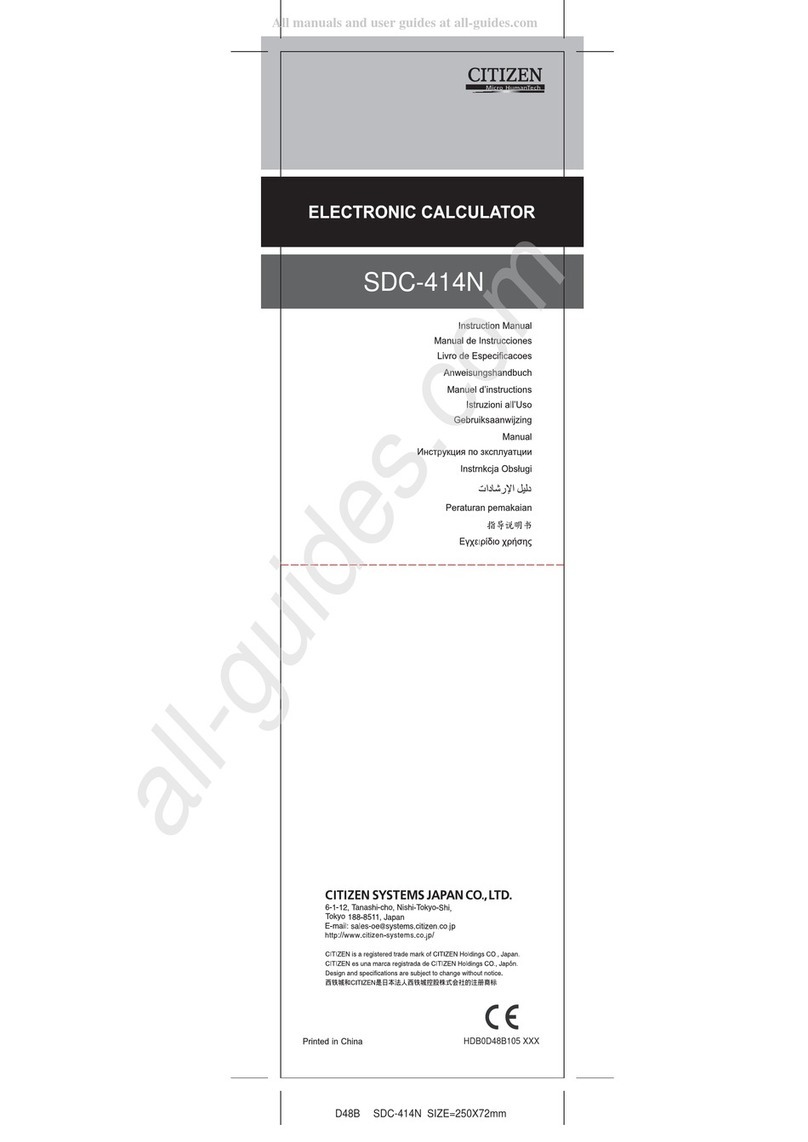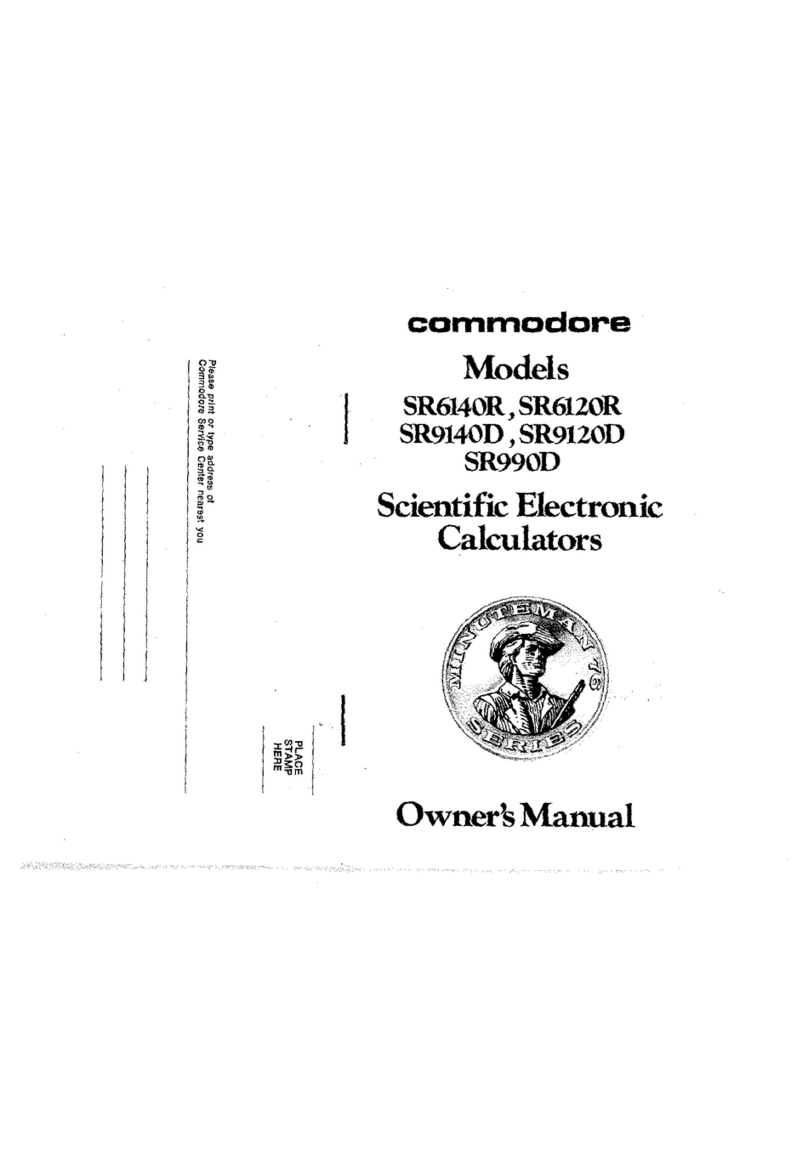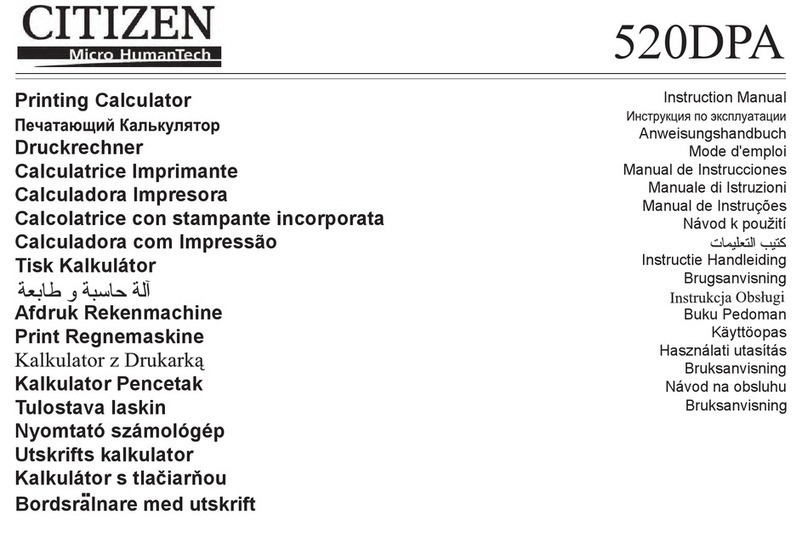
hp calculators
HP 9g Statistics – Process Capability
Practice solving process capability problems
Example 1: As part of a process optimization effort, an industrial manager had to determine whether their
manufacturing process, for which µ= 19.35 and σ= 2.05, was capable. The population of data values is
assumed to be normally distributed. Theupper and lower specification limits of the process are 23.3 and
11, respectively. How could the HP 9g help her?
Solution: By calculating the Cpand Cpk statistics to measure the process capability. First of all, let’s clear any
previous statistical data in memory (press `1, then select D-CL and finally press =). Since it is
one single process, we’ll carry out all calculations in 1-VAR mode (i.e. `1, select 1-VAR and press
=). No data set is provided. Therefore, in order to enter µand σinto the calculator, we’ll have to use
the method described in the HP 9g learning module Statistics – Normal Distribution., that is to say: create a
data set consisting of two values µ+ σand µ– σ. To do this press:
E=19.35+2.05‡‡19.35-2.05‡
It is very important to bear in mind that, when using this trick, those variables shown in the STATVAR
menu that depend on the actual data or the number of data, n, will be meaningless. Only those which only
depend on the average and the population standard deviation (that is, in which n is not explicitly used in
their calculation) will be correct; namely: x, y, σx, σy, , , , , , ,P(t), Q(t), R(t)
and t . Any other variable involves the value of n or the data in their calculation. Particularly, note that ‘ppm’
is calculated by the HP 9g usingthe actual value of n, not the one ‘embedded’ in µ.
px
Cpkx
Cax
Cpy
Cpky
Cay
C
The next step is to input the LSL and USL values. Press:
E, select LIMIT, =11‡23.3‡
Let’s determine if the process is located at the midpoint of the specification range. We can do it graphically
by plotting the process control chart: press ~e P2. The x-axis range is automatically set to
(LSL, USL). The resulting bell-shaped curve is clearly off-center. Alternatively, we can do it numerically:
35191517
211323
2..
.LSLUSL =µ≠=
=
+
Or simply by finding the value of , which is displayed by pressing:
a
C
~e ‡‡‡‡
=0.3577 ≠0. Therefore, the capability index that we must find is C
a
Cpk because Cpk, unlike Cp, accounts
for a shift in the mean of the process to either specification limit. All these statistics are in the STATVAR
menu, so press ~e ‡‡‡†† to display Cpk.
Answer: C
pk = 0.6423 (rounded to four decimal digits). Since Cpk is clearly smaller than 1.33 (even than 1, in fact) the
process is incapable: the process spread exceeds the tolerance spread, which assures that out-of-
tolerance products will be made.
hp calculators - 3 - HP 9g Statistics – Process Capability - Version 1.0
